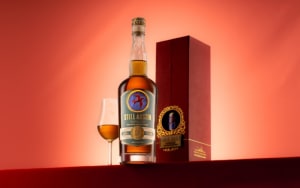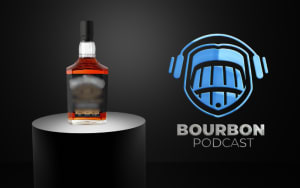The Melvale Distillery, a cornerstone of Maryland’s rich whiskey heritage, is now at the center of a contentious demolition project in Baltimore. This historic site, which once produced the celebrated Maryland rye whiskey, has been partially dismantled, leaving preservationists, whiskey enthusiasts, and local historians worried about its ultimate fate.
A Legacy of Maryland Rye Whiskey
Before Kentucky earned its reputation as the home of bourbon, Maryland was synonymous with rye whiskey. Melvale Distillery, nestled along the Jones Falls in North Baltimore, was a significant player in the state’s whiskey industry. Established between 1850 and 1862, the distillery became renowned for its Melvale Pure Rye, a premium whiskey brand that gained fame even beyond American shores. Advertised in the early 20th century as "rich and mellow, 12 years old," a gallon of Melvale Rye could be purchased for just $4—a testament to its status as a luxury spirit of its time.
The distillery's prominence made it a target during the Prohibition era. In 1923, armed guards defended the site from thieves attempting to raid a warehouse containing 200,000 gallons of whiskey, a dramatic event that underscored the value of Maryland rye. However, Prohibition forced the distillery to pivot, first to turpentine production and later to vinegar, marking the beginning of a slow decline.
Revival and Modern Recognition
Despite its operational shifts, the Melvale Distillery’s legacy endured. Maryland rye whiskey experienced a resurgence in recent years, thanks to efforts by brands like Under Armour founder Kevin Plank's Sagamore Spirit and Philadelphia's New Liberty Distillery. These initiatives aimed to revive historic Maryland rye labels, including Melvale, as a nod to the state’s pre-Prohibition whiskey heritage.
“Melvale was a premium rye whiskey in its day,” noted Tom Jensen, co-founder of New Liberty Distillery. His team sought to recreate the brand’s historical significance, blending old-world craftsmanship with modern appreciation.
Environmental Troubles and Ownership Changes
In recent decades, the distillery was repurposed as a vinegar production plant operated by Fleischmann’s Vinegar Company. However, the facility faced environmental scrutiny after numerous reports of pollutants, including ethyl alcohol and grain vinegar, leaking into the Jones Falls between 2022 and 2024. These spills prompted a lawsuit by the Maryland Department of the Environment (MDE), which led to a $1.1 million settlement and a consent decree requiring cleanup efforts at the site.
The Fleischmann’s Vinegar plant’s parent company, Kerry Group, an Ireland-based food conglomerate, announced plans to shut down production and remove all vinegar tanks. Demolition of the site began as part of the environmental remediation process, sparking fears that the historic stone distillery building could also be destroyed.
Preservationists Sound the Alarm
Baltimore preservationists have expressed dismay at the potential loss of the Melvale Distillery, believed to be one of the longest continuously operating distilleries in Maryland. Johns Hopkins, executive director of Baltimore Heritage, emphasized the building’s historical significance, stating, “It would be a real loss to demolish the 1850 stone Melvale Distillery.”
Nathan Dennies, who conducts history tours of the Jones Falls area, highlighted the site’s role in Maryland’s whiskey story, which once rivaled Kentucky’s bourbon dominance. He pointed out that artifacts like promotional materials for Melvale Rye were even found in the wreck of the Titanic, further cementing its cultural impact.
Despite its importance, the distillery lacks legal protections that could prevent demolition. It is not located within one of Baltimore’s designated historic districts nor recognized as a city landmark. Kerry Group paid $5,300 for a demolition permit, which was approved last year, leaving little recourse for preservation advocates.
A Silent Future
As of now, the future of the original stone distillery remains uncertain. The company has been tight-lipped about its plans, with a spokeswoman stating only that Kerry Group has “obtained all permits and approvals” for the work. Some fear the worst, given the visible damage to the site, including missing sections of the building’s north face.
Theron Russell, a local resident, has long admired the distillery’s cupola from the nearby Jones Falls Expressway. He expressed concern upon hearing about the demolition, saying, “I may drive down in a few days and see a pile of rubble.”
A Call for Preservation
The Melvale Distillery’s potential loss underscores the challenges of balancing development, environmental responsibility, and historical preservation. Advocates argue that repurposing the site, as has been done with other historic buildings in the Jones Falls Valley, would honor its legacy while giving it a new lease on life.
For now, the fate of one of Maryland’s most iconic distilleries hangs in the balance, a poignant reminder of the fragility of history in the face of modern priorities.
Original photography copyright ©2006 by John Lipman and by Howard Stoops




